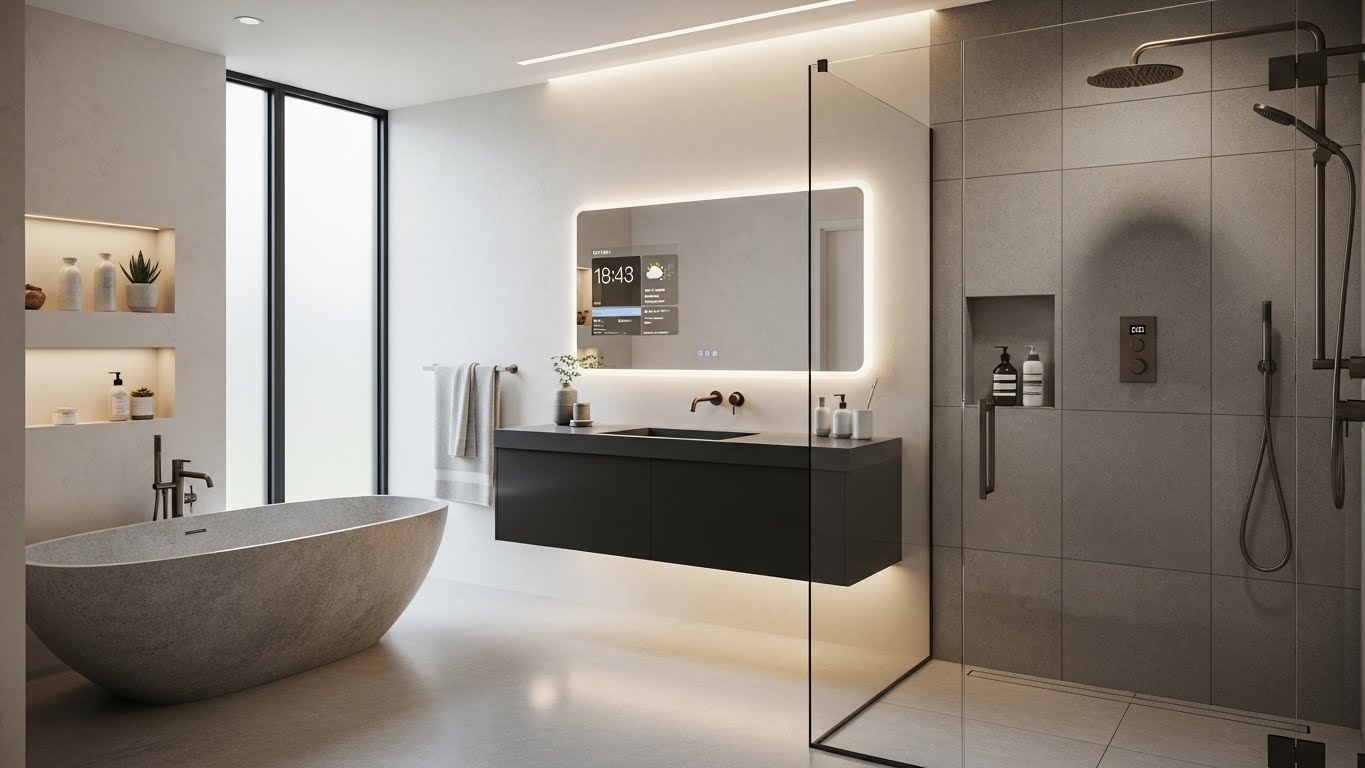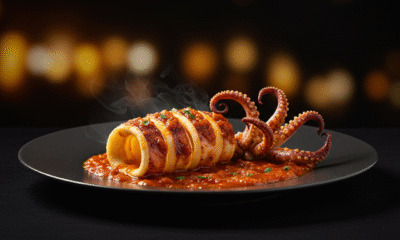HomeImprovment
DIY Pyntekvister Arrangements for a Cozy and Elegant Look And Home Decoration

In the world of natural home décor and creative design, pyntekvister stand out as a unique and elegant element. Derived from Scandinavian roots, the term “pyntekvister” translates to decorative branches—a simple yet impactful way to add nature’s charm to any space. Whether used in rustic interiors, modern minimalistic settings, or festive decorations, pyntekvister bring warmth and personality to your environment.
The popularity of pyntekvister has grown globally as people embrace eco-friendly materials and natural aesthetics. These branches are used for crafting, wall art, table arrangements, and even as seasonal decorations. This article will explore their origins, creative uses, care tips, and design inspirations while maintaining an organic balance between tradition and modernity.
The Origin and Meaning of Pyntekvister
Pyntekvister originated in Nordic culture, where nature plays a central role in design and lifestyle. Scandinavians have long embraced simplicity, functionality, and natural materials in their interiors. The concept of pyntekvister reflects this philosophy—using natural branches as ornaments to create a sense of harmony and calmness in homes.
These decorative branches are typically sourced from birch, willow, eucalyptus, or cherry trees. Each type of pyntekvister has distinct features such as color, texture, and fragrance. In ancient times, they were also used during seasonal festivals to symbolize growth, renewal, and connection to the earth.
Types of Pyntekvister
The world of pyntekvister includes various types depending on wood species, color, and decorative purpose. The following table provides a brief overview of the most popular kinds used in home and event decoration.
| Type of Pyntekvister | Material Source | Color/Texture | Common Use |
|---|---|---|---|
| Birch Pyntekvister | Birch Tree | Light, smooth bark | Minimalist décor and natural arrangements |
| Willow Pyntekvister | Willow Tree | Flexible and rustic | Festive wreaths, artistic projects |
| Eucalyptus Pyntekvister | Eucalyptus Plant | Silvery green leaves | Aromatic home decoration |
| Cherry Blossom Pyntekvister | Cherry Tree | Pinkish hues | Wedding and event decoration |
| Artificial Pyntekvister | Synthetic or preserved | Varies | Long-lasting indoor use |
Each type of pyntekvister serves a unique purpose, allowing decorators and crafters to choose the best fit for their themes and seasons.
The Aesthetic Power of Pyntekvister in Home Décor
The charm of pyntekvister lies in their versatility. Whether displayed in a vase, mounted on a wall, or arranged in a centerpiece, these branches add texture, structure, and a touch of nature to any room. Their minimalist yet stylish look complements Scandinavian, bohemian, and modern interiors alike.
In Scandinavian homes, are often combined with candles, glass vases, or ceramics to achieve a cozy, harmonious ambiance. They bring life into neutral spaces without overwhelming them. Additionally, can be used as seasonal decorations—fresh green ones in spring, frosted or painted branches in winter, and dried variants for autumn.
Seasonal Uses of Pyntekvister
Decorating with pyntekvister can vary throughout the year. Their adaptability makes them ideal for both everyday aesthetics and special occasions.
| Season | Recommended Pyntekvister Type | Decorative Idea |
|---|---|---|
| Spring | Willow or Cherry Blossom | Pair with fresh flowers for Easter décor |
| Summer | Eucalyptus | Add in coastal-themed interiors |
| Autumn | Dried Birch or Oak | Use as rustic centerpieces |
| Winter | Frosted Artificial | Combine with lights for Christmas displays |
By changing simple details like color or arrangement, you can keep your home refreshed every season with pyntekvister.
DIY Ideas with Pyntekvister
Creative enthusiasts can craft beautiful items using. Here are a few ideas to transform your home or workspace:
-
Wall Art Installation: Arrange multiple in a geometric or random pattern on a wall for a natural art display.
-
Festive Wreath: Combine with ribbons, berries, and pinecones to make a unique holiday wreath.
-
Table Centerpiece: Plac in a clear vase with fairy lights or flowers for a stunning table setup.
-
Hanging Décor: Han from the ceiling with decorative ornaments for a boho-chic vibe.
These DIY ideas encourage sustainability and creativity, reducing the need for synthetic décor materials.
Caring for Pyntekvister
Proper maintenance extends the beauty and life of your. Natural branches require minimal care but benefit from a few key practices:
-
Dust Regularly: Use a soft cloth or feather duster to keep them clean.
-
Avoid Moisture: Keep branches away from humid areas to prevent mold.
-
Use Sealant Spray: For drie, a clear matte sealant helps preserve color and structure.
-
Store Properly: When not in use, store them in a dry, cool place to maintain their shape.
Artificial, on the other hand, only need occasional cleaning and can last for years, making them a convenient option for long-term decoration.
Why Choose Pyntekvister for Modern Interiors
In a world leaning toward sustainability and minimalist aesthetics, have become more than just decorative items—they represent a design philosophy. Using natural materials helps reduce waste and brings a calming effect to indoor environments.
Modern designers often integrate in spaces where nature meets innovation—like open-concept living rooms, spas, and eco-friendly offices. Their neutral tones balance vibrant interiors, while their organic forms break the monotony of straight architectural lines.
Moreover, can complement other materials like linen, stone, and metal. When styled properly, they create a soft yet sophisticated look suitable for both urban and countryside homes.
Pyntekvister in Events and Celebrations
Event planners and stylists increasingly use to add natural charm to weddings, parties, and seasonal celebrations. Their versatility allows them to blend with flowers, fabrics, and lighting seamlessly.
For weddings, make perfect aisle decorations or arch accents, symbolizing purity and connection with nature. During Christmas, frosted or painted branches become festive highlights, while in spring festivals, blooming embody renewal and joy.
Environmental Benefits of Pyntekvister
Aside from aesthetics, pyntekvister promote sustainability. By using natural or biodegradable materials, decorators reduce plastic use and environmental waste. Many pyntevister are made from pruned branches that would otherwise be discarded, thus supporting recycling and upcycling efforts.
Here’s a quick look at the environmental benefits of:
| Benefit | Description |
|---|---|
| Eco-friendly | Made from renewable, biodegradable resources |
| Recyclable | Can be composted or reused in crafts |
| Low Carbon Footprint | Requires minimal energy to process |
| Long-lasting | Especially when dried or preserved properly |
Choosing supports a greener lifestyle while maintaining stylish aesthetics.
Conclusion
In essence, pyntekviser are more than decorative branches—they are symbols of simplicity, creativity, and environmental harmony. Their ability to transform spaces naturally makes them timeless elements in modern décor. Whether you prefer rustic arrangements or sleek minimalist displays, offer endless design possibilities.
As sustainability continues to influence lifestyle choices, remain a perfect representation of the balance between beauty and responsibility. Embracing them in your home or event décor is not just about aesthetics—it’s about reconnecting with nature in a refined, meaningful way.

HomeImprovment
Why Professional Drain Cleaning is Essential for Atlanta Homeowners

Atlanta’s bustling city life comes with its unique set of home maintenance challenges, one of which is maintaining a functional and efficient plumbing system. With the city’s fluctuating weather conditions and urban congestion, the likelihood of encountering clogged drains increases significantly. Residents must remain vigilant in their approach to upkeep, ensuring that their homes remain free from the perils of water damage and unsanitary conditions. Professional drain cleaning serves as a critical solution to these potential problems, offering peace of mind and long-term cost savings. Below, we’ll explore the myriad benefits of engaging experts to keep your drainage systems in top-notch condition.
Protecting Your Plumbing System From Common Blockages
Atlanta homeowners are often cautioned about the consequences of neglecting their plumbing systems. Hair, soap scum, food waste, and small objects can lead to blockages that disrupt water flow and pressure. By understanding what commonly causes clogs, residents can take preventive measures to safeguard their pipes.
Preventive strategies, such as installing drain guards and being mindful of disposing of certain substances, can significantly reduce the incidence of blockages. However, even with vigilant habits, it’s not possible to prevent every clog. That’s where professional drain cleaning services play a pivotal role. They have the expertise to tackle tough blockages that household measures cannot address.
It’s important for Atlanta homeowners to recognize the signs of a developing clog, like slow-draining sinks, gurgling noises, or water pooling. These symptoms can serve as a cue to enlist Atlanta drain cleaning services, avoiding the unwanted aftermath of complete blockage.
Professional Drain Cleaning Versus DIY Methods: What Atlanta Homeowners Should Know
While many Atlanta residents might be tempted to tackle clogged drains themselves using off-the-shelf chemical cleaners or homemade concoctions, these methods can present risks. Harsh chemicals can corrode pipes, causing more harm than good in the long run. Additionally, they often provide only temporary relief from clogs, failing to address the root of the problem.
DIY drain cleaning methods can also be less effective for severe or deeply lodged blockages. Plumbers bring specialized tools to handle these tougher jobs, employing methods such as hydro jetting, which uses high-pressure water to obliterate even the most stubborn clogs. These tools and techniques are typically beyond the reach of the average homeowner.
Understanding the intricacies of a home’s plumbing system is also critical when attempting to resolve drain issues. Without this knowledge, a well-intentioned DIYer could inadvertently cause more damage. Professionals in the drainage industry are trained to diagnose and solve complex problems safely and efficiently.
The Role of Professional Drain Cleaning in Preventing Costly Repairs
Encountering an unexpected plumbing emergency can be both stressful and expensive for Atlanta homeowners. Professional drain cleaning services offer a form of insurance against such events by maintaining the health of the plumbing infrastructure. By clearing away debris and buildup, professionals can help to ensure that the risk of pipe bursts or severe blockages is kept to a minimum.
Preventive maintenance also extends the overall lifespan of a plumbing system. The corrosive effects of accumulated substances like rust and mineral deposits can weaken pipes over time. Regular professional cleaning helps to remove these destructive agents, protecting investments in the home’s infrastructure.
The indirect costs of plumbing issues, such as water damage to walls, flooring, and furniture, can be even more detrimental than the direct repair costs. By eliminating the causes of potential drainage problems, professional services help to preserve the integrity of a home’s structure and aesthetic appeal.
How Professional Drain Services Can Enhance Home Hygiene and Health
Clogged drains can create unhygienic conditions by allowing bacteria and mold to flourish. This creates a potential health risk for families, especially in humid areas like Atlanta, where moisture can exacerbate the problem. Professional drain cleaning eliminates these health hazards, promoting a cleaner and safer home environment.
Standing water resulting from clogged drains can be a breeding ground for pests like mosquitoes, which are carriers of diseases. Ensuring drains are clear and functional through professional cleaning can minimize the presence of pests, thus contributing to a home’s overall well-being.
Bad odors emitted from blocked drains are more than an inconvenience; they can also impact the overall quality of life. These odors can permeate throughout a home, making it an unpleasant place to live. Professional cleaning services eradicate these smells, enhancing the comfort of living spaces.
Altogether, the advantages of professional drain cleaning for Atlanta homeowners are clear and significant. From enhancing the life of your plumbing system to protecting your health and comfort, professional services ensure that a home’s drainage system functions optimally and cost-effectively. Regular maintenance by experts is a wise investment for any proactive homeowner, safeguarding against both minor inconveniences and major catastrophes.
HomeImprovment
Innovative Bathroom Remodel Trends for Modern Homes

The bathroom has evolved from a purely functional space into a sanctuary for relaxation and self-care. Modern homeowners are no longer content with standard fixtures and outdated designs; they seek innovative solutions that combine style, comfort, and efficiency. From smart technology to sustainable materials, today’s bathroom remodel trends focus on creating spaces that are both visually appealing and highly functional. Sleek vanities, walk-in showers with advanced water-saving features, and statement lighting are just a few elements redefining the modern bathroom. Homeowners are increasingly exploring creative layouts and personalized designs to make their bathrooms not just practical, but an extension of their lifestyle and aesthetic preferences.
Achieving a cutting-edge bathroom often requires guidance from experienced professionals who understand both design trends and the practical installation challenges that arise. Collaborating with the best bathroom remodelers ensures that every element, from custom cabinetry to high-tech fixtures, is executed with precision and quality. These experts bring fresh ideas to the table, helping homeowners strike a balance between luxury, functionality, and long-term durability. Whether incorporating spa-inspired features, bold color palettes, or eco-friendly materials, professional remodelers can transform a conventional bathroom into a contemporary retreat that reflects personal style while enhancing the home’s value.
Sustainable Materials and Eco-Friendly Fixtures
With environmental awareness on the rise, homeowners are increasingly searching for ways to make their bathrooms more sustainable. Choosing recycled materials, such as reclaimed wood for vanities or recycled glass for countertops, is both environmentally responsible and aesthetically striking. These materials, combined with water-saving fixtures such as low-flow toilets, showerheads, and faucets, significantly reduce water usage without compromising performance. Water-efficient fixtures can reduce water use by up to 50%, resulting in significant utility savings and a positive impact on the environment.
Integration of Smart Technology
Today’s bathrooms are becoming smarter, seamlessly integrating technology into daily routines. Motion-activated faucets, touchless toilets, and app-controlled showers provide both luxury and practicality. Smart mirrors featuring integrated LED lighting, weather updates, and defogging capabilities are also on the rise, creating a futuristic vibe while streamlining your mornings. Smart showers, which can be pre-set for temperature and flow, offer not just comfort but also optimize energy and water use, making them a win for sustainability and convenience.
Spa-Inspired Retreats
Bathrooms are no longer utilitarian spaces but are being designed as sanctuaries for relaxation and rejuvenation. Features like oversized walk-in showers equipped with rainfall showerheads, steam functions, heated flooring, and freestanding tubs evoke the ambiance of luxury spas. Ambient lighting, soft music, and calming aromatherapy elevate the relaxing atmosphere. Spa-inspired trends transform the bathroom into a daily retreat, promoting overall well-being while introducing a touch of affordable luxury to your home.
Personalized Wellness Spaces
Personalization is extending into bathroom designs with wellness as the top priority. Innovative homeowners are incorporating bespoke elements—such as infrared saunas, chromotherapy (color therapy) showers, and built-in aromatherapy diffusers—that go beyond aesthetics and address physical and emotional wellness. Integrating these features customizes the bathing experience, providing holistic benefits for mind and body.
Hidden Storage Solutions
Functionality is a non-negotiable part of good design, and hidden storage solutions are becoming a major trend in modern bathrooms. These clever features keep essentials neatly organized while maintaining a clean, minimalist look. Consider recessed wall niches for shower items, vanity cabinets with pull-out hampers, and mirrors that double as concealed medicine cabinets. Even under-sink organizers and built-in shelving can help maximize space without sacrificing style. The result is a clutter-free environment where every item has a designated place, supporting effortless daily routines and a sleek aesthetic. A well-considered integration of storage not only improves usability but also fosters a feeling of calm and openness, which is particularly important in smaller bathrooms with limited space. Clever concealed storage allows for a harmonious balance between aesthetics and practicality, turning even the smallest bathrooms into functional, fashionable retreats.
Bold Design Elements: Tile Drenching and Natural Finishes
Bold, cohesive design choices are carving out their place in bathroom remodels. Tile drenching—covering both floors and walls with a continuous tile design—offers a seamless and immersive look that can range from timeless neutrals to vibrant patterns. This technique maximizes the sense of space, while natural finishes such as unpolished stone sinks or wood vanities lend warmth and texture. Earthy elements help soften the room, blending nature-inspired beauty with modern sophistication. For more insights on this trend, refer to Livingetc.
Color-Blocking and Bold Contrasts
The minimalist era of all-white or gray bathrooms is giving way to vivid, expressive color schemes. Color-blocking uses bold hues—such as navy, emerald green, or deep burgundy—paired with lighter tones or metallic accents to create high-impact contrast. This fresh approach adds personality and makes even the simplest bathroom remodel stand out, giving homeowners a chance to showcase their creativity while still maintaining cohesion with the overall design.
Conclusion
Modern bathroom remodels combine innovative design, wellness features, and eco-friendly solutions to craft spaces that are both visually appealing and highly functional. Using sustainable materials, smart technology, bold aesthetics, and a focus on personal well-being, you can develop a bathroom that is both comfortable and cutting-edge. These trends not only increase your home’s value but also turn your bathroom into a sanctuary suited for contemporary living.
HomeImprovment
The Environmental Benefits of Using Mosquito Nets in Dubai

Mosquitoes are prevalent in Dubai due to the extreme heat and humidity of the desert climate. It is a hot and sticky environment, especially over the summers. Mosquitoes are a danger to the Dubai population due to the deadly viruses they can transmit: dengue, the West-Nile, and chikungunya viruses. Mosquitoes are also a threat to Dubai’s economically valuable and genetically diverse wildlife. Repellents and insecticides, though effective, harm the environment; therefore, using a mosquito net in dubai becomes the best alternative.
Less Use of Mosquito Insecticides
The environmental damage of the insecticides is large. Pesticides damage unintentional target insects and wild life, and can contaminate the soil and water. Mosquito nets do not execute toxins into the environment, and serve as a big barrier. Mosquito insecticides and pesticides harm the environment; therefore, the use of mosquito nets creates balance in the environment. Mosquito nets, and the toxins and pesticides that they can replace, can further Dubai’s sustainability and environmental goals.
Energy Conservation
Residents employ numerous electricity-powered mosquito net repellents watering the air conditioning systems, and fans to make the indoors less insect-friendly. Other effective solutions to combat mosquitoes use just as much electricity. There is, however, an electricity-free mosquito protection alternative to the methods above. Mosquito protection nets are designed to be air permeable allowing airflow while remaining insect-proof, reducing target indoor temperatures and the need for the use of other mosquito repellents. This form of protection is a less energy demanding household and passive form of energy and emissions use protection.
Sustainability and Waste Prevention
Mosquito nets also have significant environmental advantages over the economically preferred solutions. Unlike industrial chemical sprays, mosquito nets are free of single use plastics and are also durable and reusable. Provided proper maintenance, a single mosquito protection net can last several years, making an effective protection alternative. The durability of a mosquito net installation in dubai helps eliminate waste and prevents chemical-laden containers from piling up in landfills.
The environmental footprint of bed net users in Dubai as they gain long-term protection from mosquitoes is also significantly reduced. Mosquito protection nets are therefore an environmentally responsible alternative.
Safeguarding Biotic Community
Chemical pest control does not consider impact on non-target wildlife (e.g. beneficial insects, avian species, small vertebrates, etc.), and the collateral damage of pesticides is an ongoing issue. Mosquito netting is selective; it prevents the entry of mosquitoes into the compartment (e.g. bite-protection of people, etc.), and it does not kill any non-target wildlife. This pest control system is more favorable in terms of supporting all the elements of wildlife. In an expanding metropolis like Dubai, mosquito netting is an ideal and unobtrusive option to maintain the equilibrium of urban wildlife.
Enhancing Indoor Climate
Clinical (e.g. medical) mosquito repellents are tailored to alleviate the psychosomatic effects and to kill mosquitoes. They, however, come with VOCs (i.e. Volatile Organic Compounds) that are irritant and detrimental to the microclimate (e.g. indoor air quality). This is a heightened risk to young and elderly occupants and to people with pre-condition to the respiratory system. Mosquito netting eliminates the need to use those repellents and creates a healthier indoor climate. In addition, the fine, breathable, and lightweight material of the mosquito netting allows occupants to maintain the windows in an open position. This improves the indoor climate, particularly air movement, by introducing a flow of outdoor air, without the ingress of mosquitoes. In a city where ventilation (and indoor climate) is key to wellbeing, mosquito netting is a significant asset, both environmentally and for health, particularly respiratory health.
Affordable and Green Lifestyle
Both cost and environmental consequences of mosquito netting as well as chemical mosquito repellants are vastly different. A high-quality mosquito net provides multi-year protection, whilst chemical mosquito repellants are continuously more expensive. There are also durability and reuse benefits that mosquito nets provide. This has, and will, continue to become more widespread and mainstream to support additional cost, and work towards and support sustainable eco-living. In addition, the modern nets gained popularity due to showcasing being pleasing to the eye, and fitting well to the existing decor of your house.
Compatibility with the Dubai Weather
Among the different cities of the world, Dubai experiences very hot temperatures and during the peak summer hot weather mosquito nets would be very useful. Mosquito nets give full protection without the use of any chemicals and without the use of any energy. For summer evenings Mosquito nets would be very useful for families to to feel secure during outdoor ceremonies and gatherings, making them very useful protection for families. For the issues that the Dubai city environment poses, mosquito nets provide the most suitable practical solution by ensuring that residents are not eco un-friendly in the Dubai city environment.
Mosquitonets.ae: Merging Protection and Eco-Friendly Practices
For users looking for the best mosquito nets in Dubai, Mosquitonets.ae has strong and eco-friendly mosquito nets. Its protective nets offer protection without excessive chemical use and promote eco-friendly lifestyles. Mosquitonets help local people protect themselves and the environment.
Conclusion
There are numerous advantages to the use of mosquito nets in Dubai. Mosquito nets are environmentally friendly as they help in less chemical pollution, save energy, reduce waste, and shield animals. Moreover, mosquito nets help in improving the air quality inside a building. Moreover, mosquito nets are cost saving, eco-friendly and work best in the climate of the city. Mosquitonets aim to help people safeguard themselves from mosquitoes and the diseases they cause and also help in protecting the environment. Dubai is an urbanizing city and the use of mosquitoes is eco friendly, helping promote a more sustainable future.
-

 food3 months ago
food3 months agoCalamariere: How to Perfectly Prepare at Home
-

 Blog3 months ago
Blog3 months agoSimpcit6: Redefining Simplicity in a Complex World
-

 Blog2 months ago
Blog2 months agoBaddi Hub: An Emerging Industrial and Business Hotspot
-

 Technology2 months ago
Technology2 months agoYourAssistantLive com: The Future of Smart Digital Assistance
-

 Crypto3 months ago
Crypto3 months agoCrypto30x.com vs Other Crypto Sites – Best Bitcoin Tools?
-

 food3 months ago
food3 months agoHürrilet Tea: Tradition, Flavor, and Wellness in Every Sip
-

 Technology3 months ago
Technology3 months agoEdivawer Explained: Transforming Your Digital Experience
-

 Technology3 months ago
Technology3 months agoOmbudsmänner: A Global Perspective on Advocacy